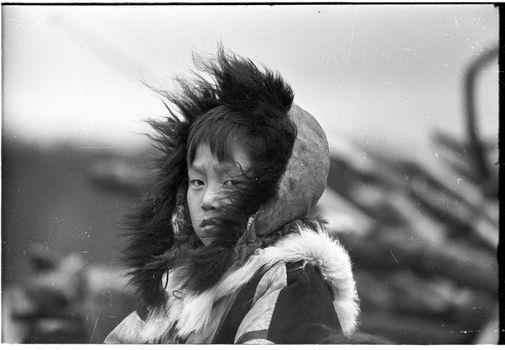(MENAFN- USA Art News)

Estonia's new President Alar Karis
Who Said an Arts Degree Is Useless? Certainly not the newly elected President of Estonia, Alar Karis, who has been the director of the Estonian National Museum in Tartu since 2018.
The new Estonia's president did not meet any resistance in the presidential elections in the country. 72 out of 101 members of parliament of the Riigikogu voted for him.
The one-candidate vote is the first for the Baltic state to regain its independence after it became part of the Soviet Republic in 1991. Former Defense Minister Jaak Jõeruyt wrote in his article that“elections with one candidate belong to the Soviet era. It’s unethical, but, oddly enough, legal,”the Associated Press reports. In fact, it is the country’s prime minister who has the most political power, and many legislators are calling for the abolition of the presidency.

The Estonian National Museum
Alar Karis will take up his new role on October 11. He is going to replace the current president whose five-year term expires on October 10. Kaljulaid, although popular with the public, lost the favor of her political colleagues due to her outspokenness with her fellow politicians and government policies.
Alar Karis was supported by both Reform and Center parties, which make up Estonia’s center-right coalition, although he has never worked in parliament or held any foreign policy positions.
Alar Karis has held numerous academic positions in Germany, the United Kingdom, and the Netherlands during his career as a molecular geneticist and biologist. Alar Karis became a professor at the University of Tartu in 1999, served as rector of the Estonian University of Life Sciences from 2003 to 2007, and rector of the University of Tartu from 2007 to 2012.
The Estonian National Museum was founded in Tartu in 1909 with the aim of developing and preserving the country’s culture and history. Much of the museum’s mission is to protect and preserve the country’s folk culture, including minority and Finno-Ugric communities.
Over the past decade, the building has undergone extensive renovation and is built around two permanent exhibitions dedicated to science and technology.

The Estonia National Museum
A permanent exhibition“Meetings” (Estonian Kohtumised), where you can learn about the everyday life of Estonians in the past, is open on the exhibition area of about 6,000 m², located on the territory of the largest museum in Estonia. Also, visitors can plunge into the life of the Finno-Ugric peoples at the permanent exhibition “Echo of the Urals” (Est. Uurali Kaja).
In addition, the Estonian National Museum hosts temporary exhibitions. The museum organizes workshops, educational programs, and guided tours in 11 languages. The Estonian National Museum is a modern conference center and a venue for international events.
ECHO OF THE URALS

At the permanent exhibition of the Estonian National Museum “Echo of the Urals” you can get answers to interesting questions about the cultural and ideological ties of the Finno-Ugric peoples, as well as about languages and genes. The exhibition also provides a quick overview of the current situation of the Finno-Ugric peoples.
The exhibition is dedicated to the indigenous peoples who do not have their own statehood, who inhabit a vast territory in the northern part of Eurasia from Scandinavia and the Baltic Sea to the Taimyr Peninsula and the Yenisei River in Siberia.
The central idea is based on the play of differences between the male and female worlds in everyday activities and outlook on the world. At the presentation of the connection between the male and female world of the Finno-Ugric peoples with daily activities, rituals, folk art.
PERMANENT EXPOSITION “ENCOUNTERS”

This is an exhibition about ordinary people in Estonia who have lived on this land at all times. By visiting this exhibition at the Estonian National Museum, visitors can observe their daily activities and home life, how they adapt to the natural and urban environment and cope with social norms, changing authorities, and the great processes of world history.
The exhibition includes thousands of objects and photographs, as well as hundreds of sounds from the archival collections of ENM and other museums, reflecting both old and new history. Many of them are on display for the first time.
People means people

The photo series selected for the exhibition is conceived as a small excursion into the history of ethnography, on the one hand, and into the history of imprinted peoples, on the other. Most of the photographs presented at the exhibition were obtained from the photo archive of the Russian Ethnographic Museum (REM). The earliest of them are photographs of Estonians, Karelians and Erzians made for the First All-Russian Ethnographic Exhibition, organized in 1867 in Moscow.
The exhibition also features photographs from the photo archives of the Hungarian Ethnographic Museum (Néprajzi Múzeum), the National Museum of Finland (Kansallismuseo), and the Estonian National Museum.
The Estonian National Museum is a cultural history museum with an ethnographic focus, whose task is to reflect everyday life, culture as a way and kind of life, taking into account its temporal, spatial, and social diversity.
Legal Disclaimer:
MENAFN provides the information “as is” without warranty of any kind. We do not accept any responsibility or liability for the accuracy, content, images, videos, licenses, completeness, legality, or reliability of the information contained in this article. If you have any complaints or copyright issues related to this article, kindly contact the provider above.